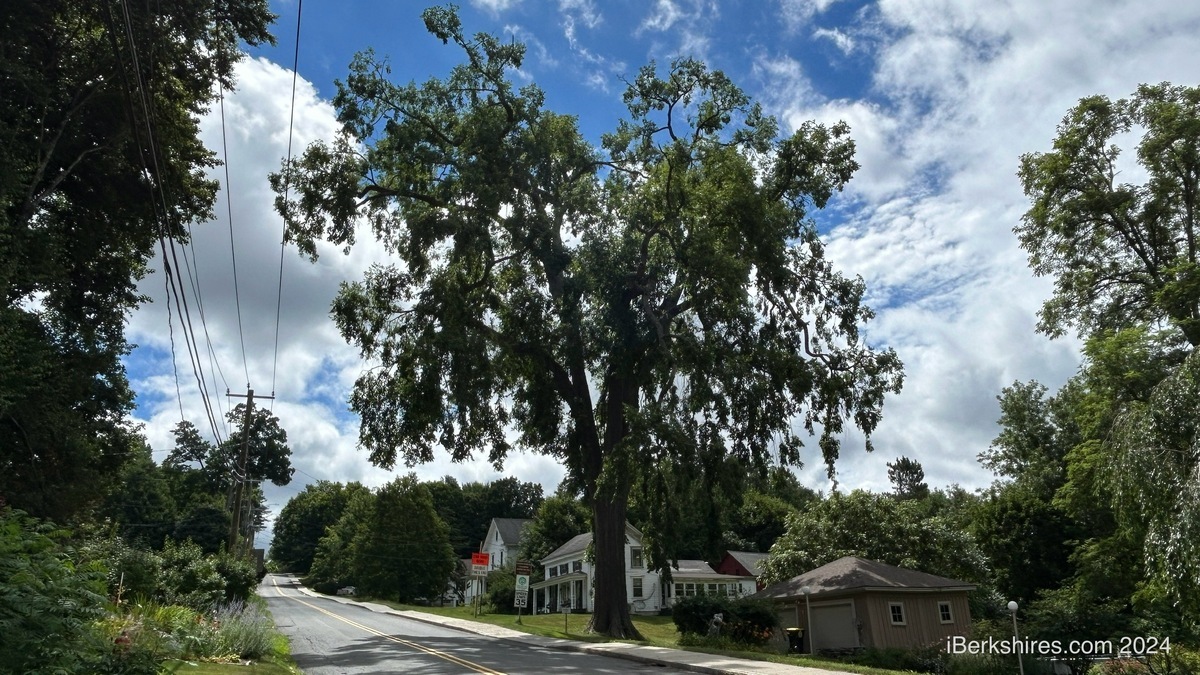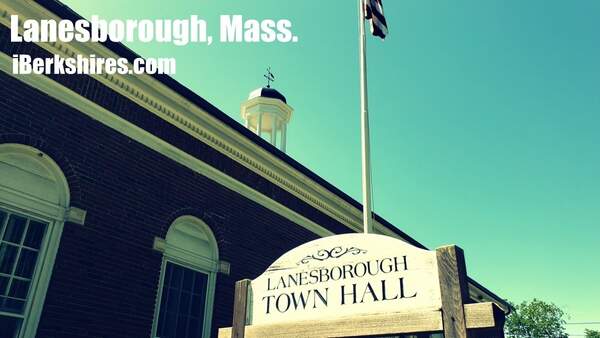
Lanesborough Elm Tree Named Largest in State
LANESBOROUGH, Mass. — King Elmer is living up to his name, now deemed the largest American Elm in the state.
Jim Neureuther, chair of the Tree and Forrest Committee, happily reported this to the Select Board on Monday. The Department of Conservation and Recreation released an updated Champion Trees list on May 4 with the town's over 100-foot tall elm at the top.
"It's official, King Elmer is the largest American Elm tree in Massachusetts," Neureuther said.
Located at the corner of Route 7 and Summer St., the king is believed to be over 250 years old and is 107 feet tall with an average canopy spread of 95.5 feet. It scored 331.88 points with the state based on a 201-inch circumference, which is a 64-inch diameter (5'4 through the middle of the tree.)
King Elmer dethroned the former champion elm in Old Deerfield Village that has been cut down. In 2019, Neureuther traveled to Franklin County to see it only to find a stump, prompting him to submit the Lanesborough tree's official measurements.
He thought, "Wait a minute, we're moving up the ranks now."
The second-place elm scored 320 points, giving King Elmer a lead in the race barring the loss of a limb.
Earlier this year, the town was notified by the Arbor Day Foundation that it had been recognized as Tree City USA for 2023, a long-held designation.
"This is our 19th consecutive year as a Tree City," Neureuther reported.
"The Arbor Day mission is to 'Inspire people to plant, nurture, and celebrate trees,' and Tree USA designation means Lanesborough has demonstrated it's a community that cares about trees. We promote, we plant, we take care of trees."
He noted that it is nice to live in the Berkshires where trees are everywhere.
To be a Tree City, a community must maintain a tree board or commission, have a tree ordinance (Lanesborough uses Mass General Law,) spend a minimum of $2 per capita on trees, and conduct an Arbor Day observance with a signed proclamation.
For the town, a little north of $6,000 must be spent. Last year's expenditures were about $11,000.
The five-member Tree and Forrest Committee was formed over 20 years ago because King Elmer contracted Dutch elm disease. Meetings are held four to is times a year and the volunteers continue inoculations every 24 to 30 months on the record-breaking elm and maintenance pruning is done by an arborist.
The committee's inventory includes 85 trees that it has planted and maintains, with 46 trees representing 36 different species at Bill Laston Memorial Park.
Neureuther said that a person would have to travel to Smith College in Northampton to see such a variety.
Tree expenditures are "pretty general," he said, with a $1,000 committee budget and impressive volunteer hours.
The inaugural Lanesborough Day will be held on August 4 at the park and the committee is planning a slate of activities to familiarize residents with the town's tree population. This includes interpretive walks, a self-walk handout, a scavenger hunt in the trees, an informational table, and possibly a book walk.
"We're really excited because this is our home turf," Neureuther said.
"I mean, we feel like Laston Memorial Park is our home because it is really a showcase, it's wonderful. I hope all of you have walked the path and have seen the trees."
The Select Board also clarified that the committee has access and control of an $18,000 fund that was established in 2022 from solar development paybacks.
As a condition for the permitting of three large solar developments, the Planning Board specified that the developers must pay one tree per acre at a 2-inch caliper or a dollar equivalent to the tree committee.
A total of 54 acres were touched and a dollar equivalent was paid.
Neureuther explained that solar developments disturb a lot of trees and the giveback to the town is to help plant shade trees as a replacement.
"This is why we want our boards and committees to come and appear before us," Chair Michael Murphy said. "I had no idea the depth and breadth of what you do. Your whole committee."
The committee began with a $200 budget and about seven years ago, it was raised to $1,000. Neureuther has been involved for 14 years.
Selectman Timothy Sorrell told him not to be afraid of asking for a budget increase.
"I'm not eager to spend town money but don't be afraid to increase your budget if you can justify it," he said.
"Because you're doing fantastic work and it sounds like you're scraping and doing everything you can with volunteer hours and I think the town should and could help you out with expenses if you need it."
Tags: trees,















